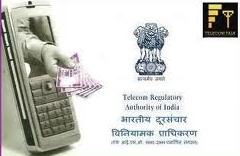  The controversy over the TRAI recommendations on the 2G spectrum auction refuses to die down with the GSMA which represents the interests of mobile operators worldwide again cautioning the India government against its recent proposals.
The following is the open letter of GSMA to the India government-
As the Government of India considers the response of 12 May from its Telecom Regulator regarding spectrum auctions, the GSMA urges the country’s leadership to reject short termism and embrace international best practice. India was recently predicted to be the second largest mobile broadband market in the world by 2016, a prospect which is now in jeopardy.
To maintain the economy’s robust growth and increase the social and economic opportunities available to all citizens, India must continue to embrace free market principles and the latest advances in technology. Nowhere is this more important than in the delivery of mobile services.
Mobile is one of the most transformative technologies in the world. India has benefited immensely from the spread of mobile services, which have started to deliver crucial healthcare in previously unserved areas and bring first class education through distance learning and online universities. It is fuelling the economy of India, improving the reach and effectiveness of India’s businesses, supporting trade and helping to create a new generation of entrepreneurs.
We are proud of the contributions that mobile has made to India’s economy, as a result of significant investments to expand its reach across the country. Mobile already drives 3.6 per cent of India’s GDP and creates, directly or indirectly, as many as 10 million jobs. However, there is still more to do, and government policy will play a key role in future progress. We will only be able to connect everyone, including the 320 million mobile subscribers living in rural communities, to mobile broadband if the Government makes significant, additional spectrum available to operators, without delay and at a fair price.
Spectrum, the radio waves upon which mobile operators depend, is the oxygen that gives life to mobile services. Unfortunately, the recent recommendations of the Telecom Regulatory Authority of India (TRAI) are not in line with international best practice, particularly as they propose to auction part of the available spectrum by end of August, and at an extraordinarily high price. While this may bring some additional money to the Treasury in the short term, it will stifle future investment and put at risk the promise of “Broadband for All”.
The Indian market has been starved of spectrum for many years. TRAI’s recommendations, especially on ‘refarming’, will increase further this scarcity and negatively impact both the quality and availability of mobile services, particularly in rural areas, leading to significantly higher prices for consumers.
The Indian market has been starved of spectrum for many years. TRAI’s recommendations, especially on ‘refarming’, will increase further this scarcity and negatively impact both the quality and availability of mobile services, particularly in rural areas, leading to significantly higher prices for consumers. |